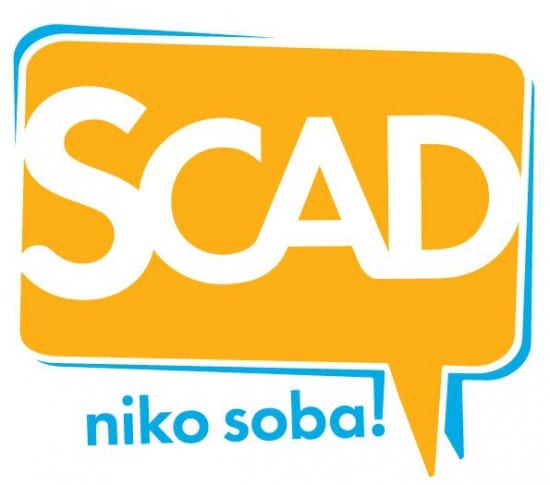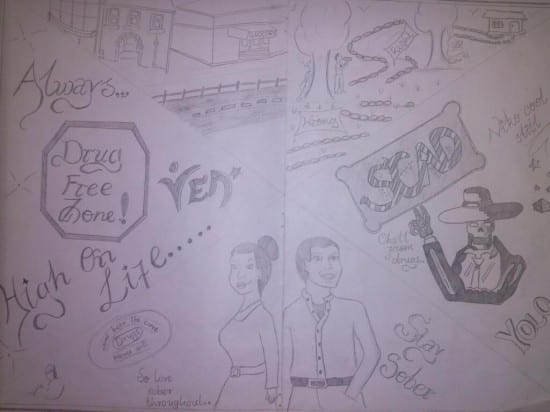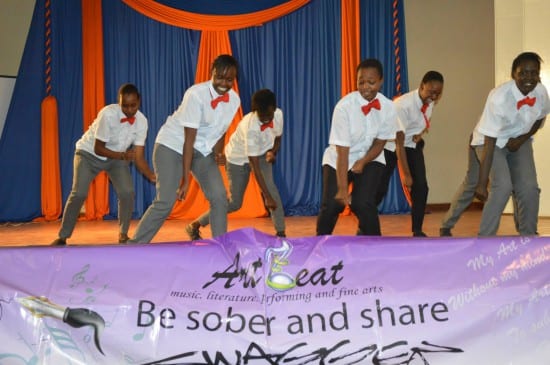Early this week, NACADA (The National Authority for the Campaign Against Alcohol and Drug Abuse – For a Drug-Free nation) Chairman John Mututho is reported to have claimed that over 1 million Kenyan children between ages 14-17 are addicted to alcohol and other drugs.
Mututho’s statement was preceded by an event on Sunday evening – one week ago to date – where 16 students were arrested consuming beer at a bar in Kirinyaga. This was quite an unfortunate event considering the restrictions of the Alcoholic Drinks Control Act, 2010, that was sponsored by Mututho in the previous parliament. Not only is it an offence to sell beer to minors, it is also an offence to allow them entry into any area where alcohol is manufactured, stored or consumed.
Sadly this is not the first time the media has to report incidents of minors consuming alcohol in pubs. What is even more shocking is the figure of 1 million addicted minors quoted by Mututho!
I might have agreed with him had he said one million minors were consuming alcohol, but that these would be addicted is frankly hard for me to believe. This especially because of the age group (14-17) years mentioned in the report. If this were the case, it would mean that for starters, 2% of the entire Kenyan population was addicted to alcohol or another drug. In a previous NACADA study (NACADA, 2007), alcohol consumption has been found to be the lowest in the age group (15-17) years at 2.6% when compared to age groups (18-24) at 11.7%; (25-35) at 16.4% and (36-65) years at 18.4%. Given that levels of consumption increase risk of dependence, then it would then follow that there were many more addicts from age 18 and above as compared to ages 14 to 17.
With one million addicts falling between the three year age range of 14-17, you can imagine what that would suggest of the levels of addiction in the country.
This is not to say that addiction to alcohol and other drugs is not a serious issue in Kenya. While it’s not yet of the scale suggested by Mututho, it is still an alarming problem that could get worse in the future without action.
My concern with this case of the 16 students is that they would choose to use alcohol in a bar as minors, and that the barman would actually sell it to them.
Why would they choose to consume in a bar, when they could have bought the alcohol and chosen to use it elsewhere, perhaps in a less conspicuous place? I see a number of possible reasons for this choice.
First is that with shops and supermarkets now required to confine alcohol to a controlled area with a special counter, it’s now harder for minors to access alcohol from such outlets. This is a good thing! It means Mututho’s law is working as was intended. It’s reducing access for minors.
Second is that the practice in most bars is for one to order for their beer first and then pay upon presentation of the bill. This can result in a situation where the barman sells alcohol through a waiter to customers who he can’t see. This is probably why the law denies minors entry into spaces where alcohol is consumed, because once they are in, controls weaken. This calls for tighter age restrictions controls to deny minors access to areas where alcohol is sold, like nightclubs.
Finally, that the students were a group of 16 is quite telling. It points at strong peer pressure and a need to identify with a group which is expected of teenagers.
However it also reveals a desire to mimic adult behavior by engaging in adult practices like socializing and intaking alcohol in a bar. This is also expected of teenagers but, it is usually inspired by images of what adult life is like from popular culture, particularly from advertising. While big alcohol advertisers claim that they target adults in their campaigns, we know they deliberately choose to target children (too). By portraying images of alcohol and the alcohol culture as a core part of the adult lifestyle, they cue children for their parts in this grand fantasy.
But they know that teenagers just can’t wait to grow up! They soon buy-in and begin a possible path as lifetime consumers. This underscores the need for a closer look at alcohol advertising and its effects on underage drinking and begs the question whether alcohol should be advertised at all. The answer to which does not lie with the alcohol industry.
—
Independent evidence shows that policy interventions, such as the Mututho Law, need to be accompanied by mobilisation efforts.
One example from Kenya is SCAD, the Students’ Campaign Against Drug Abuse, that is doing heart-driven work to reducing the prevalence rates of alcohol use, substance abuse and HIV infections among young people.
In addition to my blog entry, I am also sharing with you seven examples of how SCAD is working and what they are doing for a better, healthier and more sustainable Kenya:
Who is SCAD?
SCAD is a non-profit organization working to help young people to achieve their potential through reducing substance abuse prevalence rates and new HIV and infections among young people in Kenya.
SCAD’s employs education, research and advocacy as the means towards achieving this goal.
What are SCAD clubs?
SCAD Clubs are anti-drug societies set up in learning institutions. They comprise of groups of students willing to remain drug free as they try and reach out to their fellow students.
SCAD clubs seek to achieve the following aims;
- Create awareness about the dangers of engaging in alcohol and drug use.
- Create forums for students to share and network among their peers around alcohol, drugs, and other issues affecting them.
- Provide peer group support for students who do not indulge alcohol drugs
- Devise new ways of alcohol and drug abuse prevention among peer groups
What activities does SCAD club engage in?
1) Peer education Training
Peer education is viewed as an effective behaviour change strategy and it draws on several well-known behavioural theories such as the Social learning theory, the theory of reasoned action and the Diffusion of innovation theory. SCAD has been using this model to affect change at the individual level by attempting to modify a persons’ knowledge, attitude, believes or behaviour. The following activities among others will be carried out.
2) Intra Club Activities
These are activities within the school that peer educators undertake to sensitize the other students regarding alcohol and drug abuse. The peer educators will be involved in coming out with relevant activities within their school. Students are encouraged to come up with student friendly interventions to create a sober free environment.
3) ART BEAT
Art Beat is a thematic arts extravaganza. It’s an annual contest for high school students to artistically express themselves through Art. This activity creates a platform for the students to air their thoughts and ideas on Alcohol and drug abuse and challenges they have experienced in pursuit of a healthy lifestyle. Besides sensitization, students have an opportunity to showcase their talents. The budding talent is thus exposed and create a platform for them to be nurtured and to become future artistis.Thus SCAD encourages the students to invoke fun and the desire to embrace sobriety.
The last year theme was ‘Niko cool still’ – meaning I am still cool – without the use of alcohol and drugs.
4) Sports Day
This is the creation of an environment where young people can have fun in the absence of Alcohol and drugs and still feel cool. Students engage in healthy leisure activities that are fun-filled but free of Alcohol and drugs. This creates a forum through which the students/ youth from different schools and backgrounds can come together and explore their talents through sports.
5) Teachers Workshop
The teachers’ forum is meant to bring together all teachers from the various schools with SCAD clubs to foster unity among the clubs. This network provides an opportunity for exploration whereby experiences from the different clubs on Alcohol and drug abuse are shared. Through this forum, SCAD will identify and create strategies that will be used to handle various situations in association with Alcohol, drugs within the schools.
6) Parents Forum
To be a good parent, you need to know how to make your children feel valued and loved, while teaching them the difference between right and wrong. We have observed that children often have a hard time adjusting to new situations .When they feel overwhelmed, our kids may express their emotions through becoming argumentative, fighting more with their siblings, or withdrawing into themselves. Thus through open forums with parents SCAD educates, informs and equips them with appropriate skills on how to relate and interact with their child as they are facing growth and development.
This forum is also used to push parents to advocate the rights of young people
7) Advocacy
Young people are meaningfully engaged in demanding for their rights from the right holders. This is done though debates, open forums and through leaders forum.


